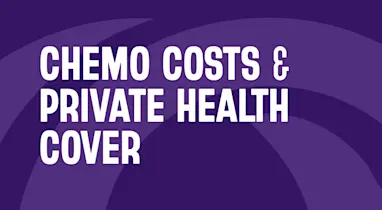less than
2 mins
How Long Are Public Hospital Wait Times In Australia?
There are many benefits to Medicare but one of the major drawbacks is the long wait times for non-emergency surgery. This can often lead to prolonged periods of pain or discomfort while you wait to be treated.
This guide covers current average wait times for elective surgery and emergency care, what the longest wait times are for certain treatments, and how choosing the right private health insurance can help you avoid the back end of a long waiting list.
Key Points
Elective (non-emergency) surgery in a public hospital can come with long waiting lists.
Many public hospitals are still dealing with an elective surgery backlog for treatment from the pandemic restrictions in 2020.
Having an appropriate private health insurance policy can speed up your surgery, and relieve your pain earlier.
What are surgery waiting lists at public hospitals?
Australia’s public hospitals are busy, so all surgical procedures are prioritised in order of urgency.
If your doctor has recommended any procedure that isn’t an emergency, this is known as elective surgery and you'll likely be placed on a waiting list.
Examples of elective surgery include joint replacements, cataracts, and removing a lump from your breast.
Wait times vary depending on the treatment your require, the availability of the specialist medical professionals, and the public hospital nearest to you. Some people will be waiting almost a year.
In March 2020, most elective surgeries were put on hold due to the COVID-19 pandemic.
That meant there were 9.2% fewer Australians being admitted for elective surgery in a public hospital than in 2019, despite the number of people waiting for surgery rising by 2.1% the year before**.
Learn more about health insurance with these guides
Which treatments have the longest waitlists?
Of the 25 most common surgeries in 2021 in Australia, the longest wait time was for septoplasty (surgery to fix a deviated nasal septum), with a wait time of up to 315 days.
Other treatments with significant wait times include:
Total knee replacement - up to 293 days
Myringoplasty/tympanoplasty (to repair a hole in the ear drum) - up to 259 days
Cataract extractions - up to 158 days
These treatments aren’t considered emergencies but they can still be painful and debilitating to live with. Your condition may also deteriorate the longer you have to wait.
This is why elective surgery waiting lists are a problem for many Australians without health insurance.
What is the average wait time on a public hospital waiting list?
Across all treatments in Australia, the average wait time on public hospital waiting lists is 43 days at the time of writing.
However, some of the most common treatments have wait times of almost a year.
The average wait time also doesn’t include time between seeing a GP and a specialist, which can often be months.
Can wait times be waived if you're a public patient?
Sadly not. The only way your wait time can be waived as a public patient is if your condition worsens significantly and is considered an emergency.
Are there waiting lists for private patients in a public hospital?
Yes, but as your private insurance is covering you, and you are being treated by your own doctor or surgeon, you may not have to wait as long.
As public hospitals are usually busy, appropriate private insurance can allow you to be treated cost effectively at a private hospital instead.
Do private hospitals have waiting lists for elective surgeries?
Yes, however waiting lists are often much shorter.
As a private patient, you also have more control over your treatment, such as choosing your doctor and the specifics around your treatment.
There are other benefits of holding private hospital cover. You can be more flexible about when and where your surgery is carried out.
You may also be able to have your own private room.
What can impact your waiting time in an emergency?
Your waiting time in an emergency room is impacted by your triage category.
This is how urgent the medical staff perceive your need is for medical care.
Category 1: Resuscitation - to be seen immediately
Category 2: Emergency - to be seen within 10 minutes
Category 3: Urgent - to be seen within 30 minutes
Category 4: Semi-urgent - to be seen within 60 minutes
Category 5: Non-urgent - to be seen within 120 minutes
Data from the Australian Institute of Health and Welfare (AIHW) found that 71% of all patients who visited A&E in Australia in 2019-20 were seen on time according to their triage category.
This is lower than last year, and doesn't take into account time waited between arriving at an emergency room and seeing the triage nurse.
Do you have to pay for care in the public hospital emergency department?
If you hold a Medicare card, you are unlikely to be charged any out-of-pocket expenses for your emergency care when you visit a public hospital.
COMPARE & SAVEWill I need to pay gap fees?
Sometimes. Your treatment may have a cost that isn’t covered by Medicare or your private health insurance.
This is known as a gap.
It occurs when your doctor charges a fee that is higher than the Medicare Benefits Schedule (MBS) fee and your insurer won’t cover the difference.
To minimise out-of-pocket costs, it’s a good idea to shop around for a policy with a “no gap” scheme.
Some funds have a “known gap” scheme.
This means you’ll still have to pay out-of-pocket costs, but you know exactly how much before your treatment or procedure, so there are no unpleasant surprises.
Does private health insurance cover private emergency care?
Your insurance will only cover you when you’re formally admitted to a private hospital as an inpatient.
This means a doctor has determined that you need hospital care and you have been assigned a bed.
If you arrive at a private hospital emergency department and are not formally admitted to hospital, you are considered an outpatient.
Some health funds won’t cover you in this situation.
Should I get private hospital cover?
Appropriate private hospital cover can help you access treatment faster, allows you to choose your doctor, and gives you more control over your health care.
Comparing different health funds ensures you’re getting what you need and not paying for what you don’t, as well as minimising gap fees.
You can find a policy that ticks all your boxes, giving you peace of mind in case you need treatment.
Our advisers can help you find affordable cover, or switch you to a new policy that better suits your needs.
Over the last 5 years, we've saved our customers an average of $300* off their annual health insurance cost when they switched policies through us.
Where can I find the best private hospital cover?
Everybody has different needs. What’s best for one person may be too expensive or inadequate for somebody else.
That’s why it’s a good idea to shop around and compare hospital cover.
In just a few clicks, you can compare hundreds of policies from our panel of trusted insurers.
Our specialists can help you through the process so you’re covered for what you need.
Conclusion
If you hold a Medicare card, you are unlikely to be charged any out-of-pocket expenses for your emergency care when you visit a public hospital.
Australia's public health system has many benefits, but wait times to access non-emergency surgery can be long and inconvenient, which is why many Australians choose to take out private health insurance.
Compare Club can help you find the right private cover for your needs, or help you save by switching your existing policy.
Get in touch with us to find a great deal in just a few minutes.
What's new in health insurance - Jun 2025
Biggest hike in years: Health insurance premiums rose by 3.73% on April 1 — the largest hike since 2018 and noticeably higher than last year’s increase of 3.03% (in 2024).
Most Aussies face higher hikes: Compare Club’s data suggests that due to the five largest funds holding nearly 80% of the market, the average increase for the majority of policyholders is closer to 4.25%.
Review your policy: Now’s the time to check if your policy still fits—better deals could be available.
Related Article
A Guide to the Private Health Insurance Rebate
COMPARE & SAVE**Based on 136,746 customers between 1 Jan 2018 - 23 December 2023. *Australian Institute of Health and Welfare, Elective Surgery
Things You Should Know
*As our customer you'll be provided with quotes directly from the insurer for the product you intend to purchase. We manage the application and deal with the administration work and insurer. We do not charge you a fee for the service we provide, the insurer simply remunerates us in return for setting up your policy. The financial and insurance products compared on this website do not necessarily compare all features that may be relevant to you. Comparisons are made on the basis of price only and different products may have different features and different levels of coverage. Compare Club does not compare all policies available in Australia and our partner insurers may not make all policies available to Compare Club.
This guide is opinion only and should not be taken as medical or financial advice. Check with a financial/medical professional before making any decisions.
Chris Stanley is the sales & operations manager of health insurance at Compare Club. With extensive experience and expertise, Chris is a trusted leader known for his deep understanding of health insurance markets, policies, and coverage options. As the sales & operations manager of health insurance, Chris leads a team of dedicated professionals committed to helping individuals and families make informed decisions about their health insurance needs.

Meet our health insurance expert, Chris Stanley
Chris's top health insurance tips:
- 1
Australia’s public health system is world-class, but wait times for public hospitals can be long, inconvenient - and leave you living in constant pain while you wait.
- 2
An appropriate private health insurance policy can speed up your surgery, relieving your pain sooner.
- 3
Family health cover means your children are covered under the same policy as you.
- 4
Many health insurance policies come with a 12-month waiting period for pregnancy-related cover, so it’s a good idea to get a family policy organized well before starting your family. This means your child will be covered from birth until at least their early twenties (depending on which health fund you select).




